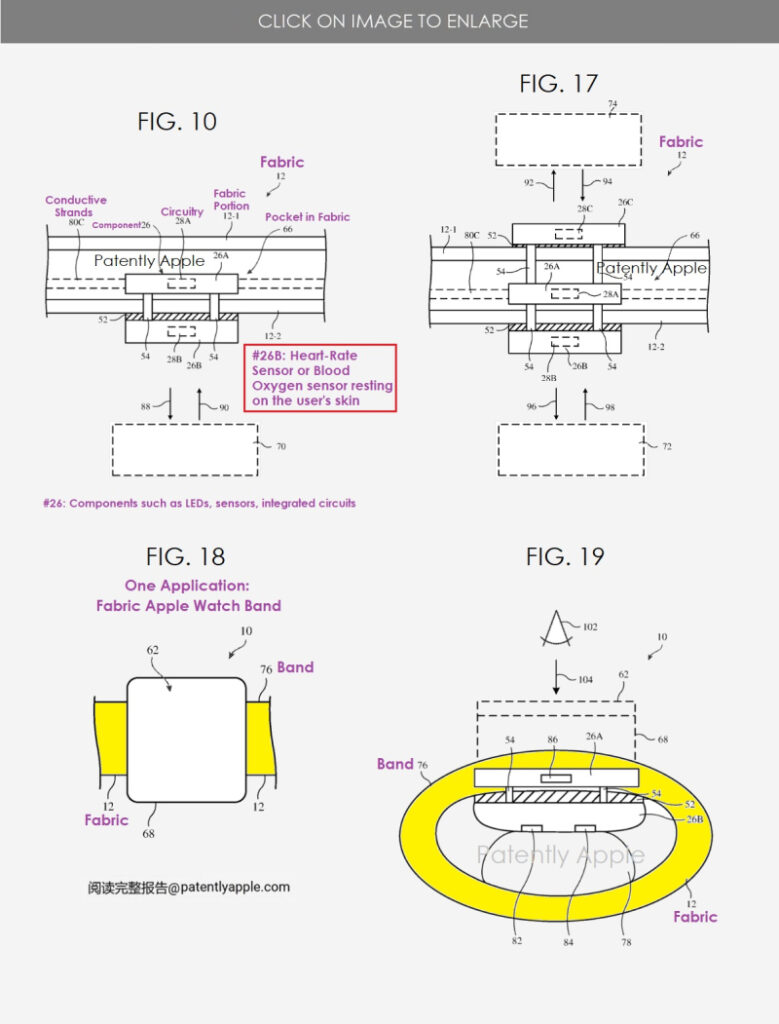The US Patent and Trademark Office has published a series of patent applications relating to Apple’s health devices, showing the giant’s steps into the Smart Fabric segment. The first two patents cover different aspects of future blood pressure monitors that Apple has been working on for at least five or six years. In a third health-related patent, Apple takes another angle by directly integrating or weaving health sensors into a wristband, headband, clothing, and more.
Apple notes that weaving equipment (e.g., knitting equipment, braiding equipment, etc.) can be provided with individually adjustable components. Using such components can allow the insertion and integration of electrical elements into the fabric during the creation or formation of the fabric.
“Weaving equipment can create a gap between the first and second portions of the fabric during weaving operations. The gap may be a gap between fabric portions, or the gap may be a position or location between fabric portions. The patent explains that an insertion tool can insert an electrical component into the gap, and the electrical component can be electrically coupled to conductive strands in the gap.

The external portion of the component may contain skin-facing and/or viewer-facing input-output devices (e.g., a heart-rate sensor, a blood oxygen sensor, a microphone, a speaker, a display, an indicator, a touch screen, a button, etc.), while the internal portion may contain circuitry that electrically communicates with the input-output device(s) in the external portion. Also, a cross-sectional side view of an illustrative electrical component within a fabric exists. That pint, a fabric strap, can incorporate an electrical component with an internal portion located within the fabric and an external portion outside the fabric.
The patent also shows an external portion that may be an optical component such as a heart-rate sensor (e.g., a photoplethysmography sensor), a blood oxygen sensor, or other optical sensors that rests against a user’s skin (or a non-optical heart-rate sensor such as electrocardiographic electrodes that rest against the skin). As it is still patent, we are still determining if we will ever see this innovation on board a future Apple Watch or as a wristband to be bought separately. Still, it is a clear sign of how healthcare can enter the consumer market by exploiting the popularity of successful technological gadgets.



